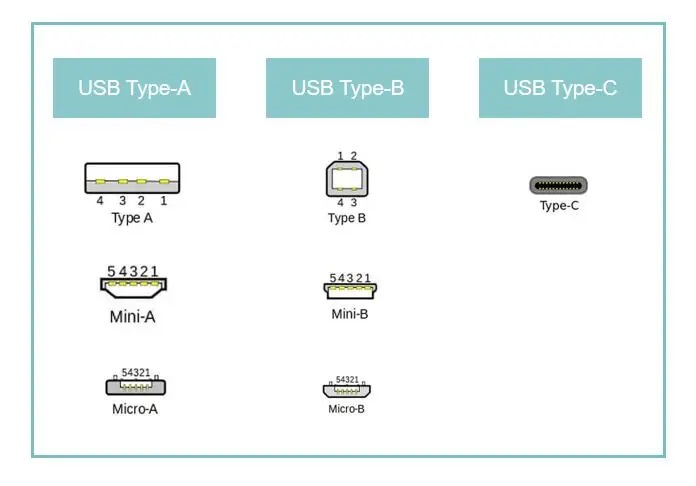
Xian HeGuangdong Xianhe Technology Group Co., Ltd
-
Hot search:SEMI package cleaning machine

Xian HeGuangdong Xianhe Technology Group Co., Ltd
In terms of appearance, USB interfaces can be divided into:
USB Type A, including 2.0/3.0/3.1/3.2 protocols, commonly used in desktops, laptops, keyboards, USB flash drives and other devices;
USB Type B, including USB 2.0/3.0 protocols, commonly used in mobile hard drives, printers and other devices;
USB Type C has 24 pins and covers USB 2.0/3.0/3.1/3.2/4.0 as well as DP, Thunderbolt and other protocols. It can not only transmit data, but also supports the transmission of video and sound signals. It is widely used in smartphones and thin and light laptops.

According to the USB version classification, USB interfaces include USB1.1, USB2.0, USB3.0, USB3.1, USB3.2, USB4.0, etc. So what are the differences between different versions of USB interfaces? Let's take a look!
The theoretical bandwidth of USB1.1 is 12Mbps=1.5MB/s;
The theoretical bandwidth of USB2.0 is 480Mbps=60MB/s;
The theoretical bandwidth of USB3.0 is 5Gbps=640MB/s;
The theoretical bandwidth of USB3.1 Gen1 is 5Gbps=640MB/s; (Note: It is actually a disguise of USB3.0)
The theoretical bandwidth of USB3.1 Gen2 is 10Gbps=1.25GB/s;
The theoretical bandwidth of USB3.2 Gen2x2 is 20Gbps=2.5GB/s;
The theoretical bandwidth of USB4 can reach up to 40Gbps=5GB/s; (Note: USB4 is divided into two versions, USB4 20 and USB4 40, with bandwidths of 20Gbps and 40 Gbps respectively.)


SweepWechat

SweepPersonal wechat